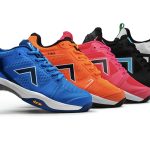Scott Sports will use P2i’s ion-mask liquid repellent nano-coating technology on its Fall 2011 line of performance, training, and trail running shoes in a deal that will move annual production of ion-mask treated shoes past the one million pair mark, the two companies said.
“It is vital that runners keep their feet dry, so we will be introducing ion-mask to our eRide Grip, T2, and IceRunner footwear ranges, to offer the ultimate comfort, whatever the weather,” said David Borrmann, product managber for Scott Sports.
P2i was established in 2004 to commercialize liquid-repellent treatments developed by the UK’s Ministry of Defence. The company has since patented a process that applies the technology to a wide range of products in a wide range of markets including lifestyle, electronics, military and institutional, life sciences, energy and filtration.
Hi-Tec pioneered the technology in the outdoor footwear market with its launch September 2008 of its V-Lite Altitude Ultra WPi, the first walking boot in the world to offer ion-mask technology. The boot was 100% waterproof, 100% breathable and 35 grams lighter than a typical mid-cut UK size 8 boot because ion mask eliminated the need for a membrane.
In the footwear, outdoor apparel and accessories markets, the presence of P2i’s technology is indicated by the ion-mask trademark.The technology works by applying a nanometer-thin polymer layer over the entire surface of a product. Using an ionized gas (plasma) this layer is molecularly bound to the surface and will not leach away. The process confers superior oil and water repellency by reducing the surface energy to ultra-low levels down to one third that of PTFE (polytetrafluoroethylene).















